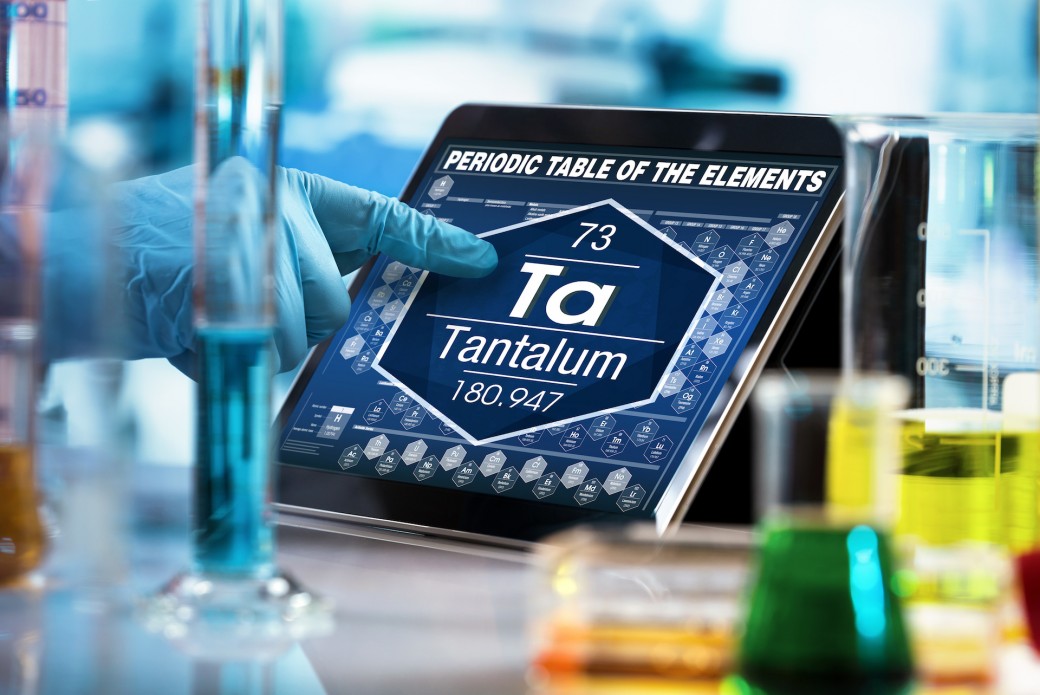
Tantalum
Tantalum [tʰantʰal] is a chemical element with the symbol Ta and atomic number 73; in the periodic table it is in the fifth subgroup or vanadium group. It is a rare, ductile, graphite gray, shiny transition metal. Tantalum is mainly used for high capacitance capacitors with small size. As the metal is non-toxic and inert with respect to body fluids, it is also used for implants such as bone nails.
Physical Properties
Tantalum is a distinctly purple-gray, hard-to-steel (Vickers hardness: 60-120 HV ), high-melting heavy metal that resembles niobium in most of its properties. It crystallizes in a cubic body-centered crystal structure. In addition to the cubic α-structure, β-tantalum is also known, which crystallizes in a tetragonal crystal structure corresponding to β-uranium with the lattice parameters a = 1021 pm and c = 531 pm. This modification is metastable and can be obtained by electrolysis of a tantalum fluoride melt.
With a melting point of about 3000 ° C tantalum has the highest melting point of all elements after tungsten, carbon and rhenium. If only a small amount of carbon or hydrogen is stored in the metal, the melting point increases significantly. A substoichiometric tantalum carbide with a melting point of 3983 ° C has one of the highest melting points of all substances.
Below a critical temperature of 4.3 Kelvin, tantalum becomes the superconductor.
While pure tantalum is ductile and can be stretched extensively (tensile strength: 240 MPa ), even small amounts of admixture of carbon or hydrogen change the mechanical strength significantly. The material becomes brittle and difficult to process. One uses this fact for the production of tantalum powder. It is loaded with hydrogen in the art and thus embrittled, then comminuted accordingly and freed from hydrogen at a higher temperature by heating.
Chemical properties
Tantalum is a non-noble metal and reacts at high temperatures with most non-metals, such as oxygen, halogens or carbon. At room temperature, however, the metal is protected by a thin layer of tantalum (V) oxide and thus passivated. A reaction takes place only at a temperature of about 300 ° C. As a powder, it is a flammable solid that can easily be ignited by brief exposure to an ignition source and then continue to burn after removal. The risk of ignition is greater, the finer the substance is distributed. The metal in a compact form is not flammable.
In most acids’ tantalum is not soluble because of the passivation, even aqua regia cannot dissolve the metal. Tantalum is attacked only by hydrofluoric acid, oleum (a mixture of sulfuric acid and sulfur trioxide) and molten salts.
